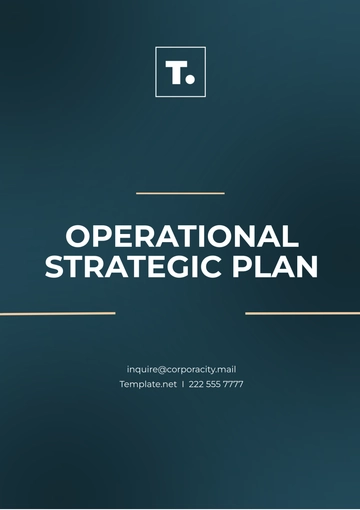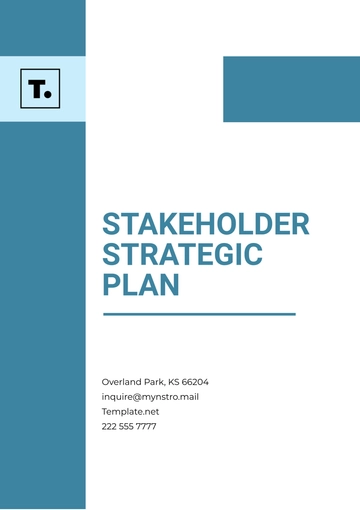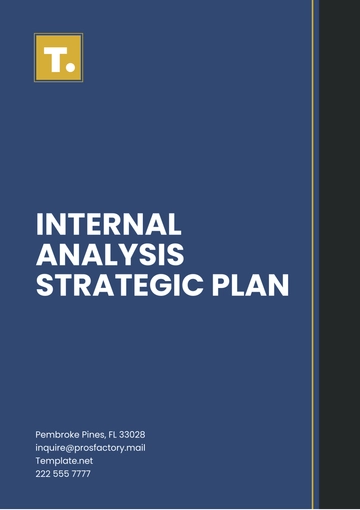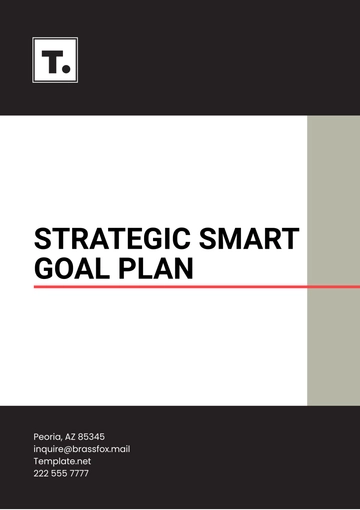Free Educational Marketing Strategic Plan

Prepared by: [YOUR NAME]
Date: [DATE]
I. Executive Summary
This marketing plan details the strategic approach for promoting our educational institution over the next five years. It highlights our objectives, target audience, marketing channels, and evaluation methods. Our primary goal is to enhance our brand presence, increase student enrollment, and foster long-term engagement with stakeholders.
II. Market Analysis
A. Industry Overview
The education industry is evolving rapidly, driven by technological advancements and changing learner needs. Online education has gained significant traction alongside traditional learning environments. The competition is strong, with institutions striving to offer unique value propositions to attract students.
B. Target Audience
Our primary audience includes high school graduates, working professionals seeking further education, and international students. We also target parents and educators as key influencers in decision-making processes.
High School Graduates: Aged 17-19, seeking undergraduate programs.
Working Professionals: Aged 24-40, interested in advanced degrees or certificate courses for career development.
International Students: Primarily from regions with fewer educational opportunities.
III. Marketing Objectives
We aim to achieve the following marketing objectives over the next five years:
Increase brand awareness by 50% within the target demographics.
Boost student enrollment by 25% annually.
Improve student retention rates by enhancing student support services.
Develop partnerships with key industry players for practical learning opportunities.
IV. Marketing Strategies
A. Brand Positioning
Position our institution as a leader in innovative, flexible, and quality education. Leverage success stories and alumni testimonials to enhance credibility and appeal.
B. Digital Marketing
Utilize digital platforms for broad reach and engagement:
Social Media Campaigns: Engage students on platforms like Instagram, Facebook, and LinkedIn.
SEO and Content Marketing: Optimize the website and publish educational content, blogs, and videos.
Email Marketing: Develop segmented email campaigns for personalized communication with prospective and current students.
C. Traditional Marketing
Incorporate traditional advertising methods in a complementary role with digital strategies:
Participate in educational fairs and exhibitions.
Advertise in educational magazines and newspapers targeting students and parents.
V. Budget Allocation
Marketing Channel | Allocation (%) |
|---|---|
Digital Marketing | 60% |
Traditional Marketing | 20% |
Events and Sponsorships | 15% |
Miscellaneous and Contingency | 5% |
VI. Evaluation and Monitoring
A. Key Performance Indicators (KPIs)
Track progress using specific KPIs:
Enrollment Numbers and Growth Rate
Engagement Metrics on Digital Platforms
Conversion Rates from Leads to Enrolled Students
Brand Awareness Measured through Surveys and Social Listening
B. Review Process
Conduct quarterly reviews to assess the effectiveness of the marketing strategies. Use data analytics and feedback from students and staff to refine tactics and redirect efforts as necessary to meet our objectives.
VII. Conclusion
In conclusion, this strategic marketing plan serves as a comprehensive roadmap for achieving our institution's growth objectives over the next five years. By leveraging both digital and traditional marketing channels, we aim to strengthen our brand presence, increase student enrollment, and build lasting relationships with key stakeholders. Our focus on data-driven evaluation and regular performance reviews will ensure that we remain adaptable and responsive to market changes, continuously improving our approach to meet the evolving needs of our target audience. With the right execution, this plan will position us as a leader in the educational sector, fostering long-term success and institutional growth.
- 100% Customizable, free editor
- Access 1 Million+ Templates, photo’s & graphics
- Download or share as a template
- Click and replace photos, graphics, text, backgrounds
- Resize, crop, AI write & more
- Access advanced editor





























